Tulip Tree
- November 8, 2023
- 0 comment
The Tulip Tree, scientifically known as Liriodendron tulipifera, is a remarkable and distinctive deciduous tree native to the eastern United States. This tree is celebrated for its striking beauty and unique tulip-shaped leaves, which lend it its common name.
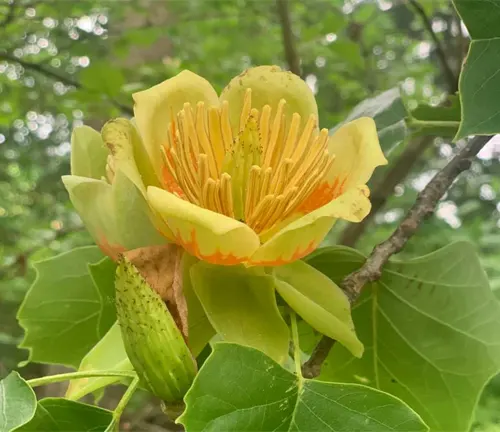
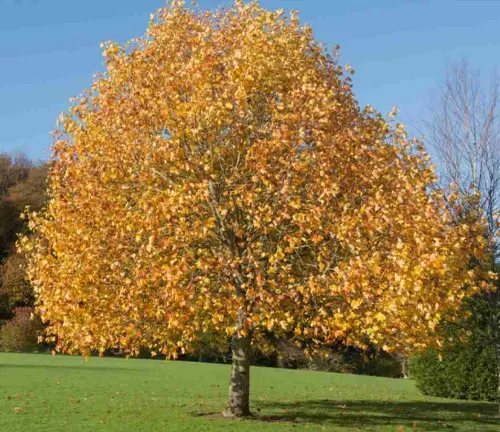
Tulip trees can grow to impressive heights, often reaching 80 to 100 feet, with a straight and tall trunk that supports a broad, pyramid-shaped crown. In spring, these trees produce eye-catching, cup-shaped flowers that resemble tulips, featuring greenish-yellow petals with an orange band near their base.
The leaves are also distinctive, with four lobes and vibrant green coloration in the summer. In the fall, they turn brilliant shades of yellow, adding to the tree’s ornamental appeal. Beyond its aesthetics, tulip trees are valued for their high-quality timber, which is used in various applications, from furniture making to construction. With its towering stature and iconic blossoms, the Tulip Tree remains a cherished and emblematic species in many landscapes across its native range.
| Characteristics | Description |
| Scientific Name | Liriodendron tulipifera |
| Common Names | Eastern United States |
| Average Height | 80 to 100 feet (24 to 30 meters) |
| Crown Shape | Broad, pyramid-shaped |
| Leaf Shape | Distinctive tulip-shaped with four lobes |
| Leaf Color | Vibrant green in the summer, turning yellow in the fall |
| Flowers | Cup-shaped with greenish-yellow petals and an orange band near the base |
| Timber Quality | High-quality wood used in furniture and construction |
| Growth Rate | Fast-growing |
| Preferred Soil | Well-drained, loamy soil |
| Sunlight Requirements | Full sun to partial shade |
| Hardiness Zones | USDA Zones 4 to 9 |
| Lifespan | Typically 150 to 250 years |
| Notable Features | Ornamental flowers, tall straight trunk |
Botanical Beauty of the Tulip Tree

The Tulip Tree, also known as Liriodendron tulipifera, is a botanical marvel renowned for its striking appearance. This deciduous tree, native to the eastern United States, stands as a testament to the beauty of nature. What sets the Tulip Tree apart is its exquisite tulip-shaped leaves, which provide the tree with its common name. These leaves boast a distinctive four-lobed structure and are characterized by their vibrant green color during the summer. However, what truly captures the imagination is the tree’s cup-shaped, greenish-yellow flowers, which bear an orange band near their base, resembling the tulip blooms that we cherish. The botanical allure of the Tulip Tree extends beyond its leaves and flowers, as its towering height and pyramid-shaped crown make it a majestic sight in any landscape.
Woodland Elegance
Tulip Trees grace woodlands and forests with their unparalleled elegance. These trees can attain impressive heights, often reaching between 80 to 100 feet, with a straight and tall trunk that supports a broad, pyramid-shaped crown. This stately silhouette lends a touch of grandeur to the woodlands they inhabit. Their leaves, which transition to brilliant shades of yellow in the fall, contribute to the woodland’s seasonal splendor. A stroll through a forest populated by Tulip Trees is a sensory delight, with the sheer elegance of their form creating a tranquil and awe-inspiring environment.

Ecological Importance
The Tulip Tree plays a pivotal role in its native ecosystems, offering numerous ecological benefits. The nectar-rich flowers attract a variety of pollinators, including bees and hummingbirds, aiding in the pollination of other plants. Additionally, the leaves provide sustenance for various caterpillars and other herbivores. Its large size and extensive canopy offer shelter and nesting sites for birds and small mammals, contributing to the overall biodiversity of the region. Moreover, the fallen leaves and decaying wood from Tulip Trees enrich the forest floor, enhancing soil quality and providing essential nutrients to the ecosystem.
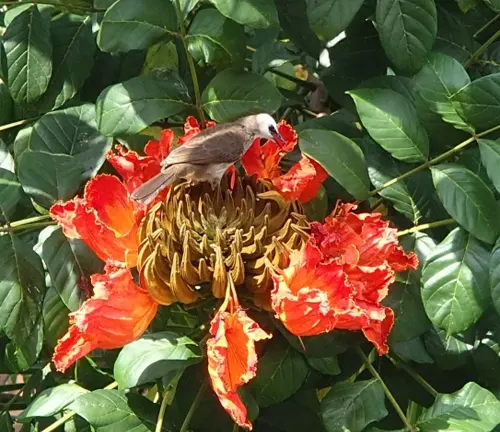
Cultivation and Conservation
Cultivating Tulip Trees in gardens and urban landscapes is an increasingly popular practice due to their ornamental appeal. They thrive in well-drained, loamy soil and require full sun to partial shade. However, despite their adaptability, Tulip Trees face threats from habitat loss and invasive pests. Conservation efforts are vital to protect these majestic trees and ensure their continued presence in our natural landscapes. By supporting conservation initiatives and planting Tulip Trees in suitable locations, we can contribute to the preservation of this magnificent species.
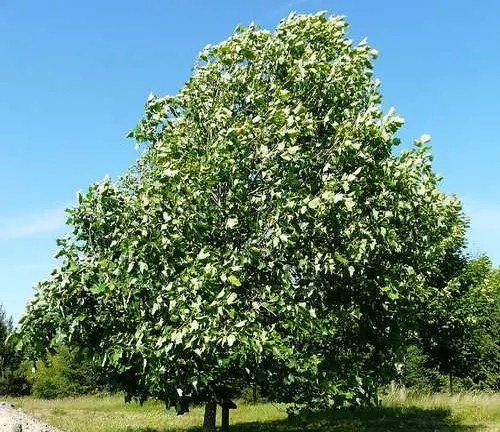
Fragrance
Beyond their visual appeal, Tulip Trees offer a delightful olfactory experience. The blossoms emit a mild, sweet fragrance that is often described as a combination of tulips and citrus. This fragrant aura adds another layer of charm to these already captivating trees, making them a sensory delight in any setting.
Soil Stabilization
Tulip Trees are valued not only for their aesthetics but also for their practical benefits. Their extensive root systems help stabilize soil, preventing erosion in areas prone to landslides or soil degradation. This contribution to soil conservation underscores the importance of Tulip Trees in maintaining ecological balance.

Common Uses
The Tulip Tree’s high-quality wood is in high demand for various applications. Its timber is prized for its fine grain and durability, making it a preferred choice for furniture, cabinetry, and musical instruments. The wood’s versatility extends to construction, where it is used for framing, siding, and other structural components. This dual role as an ornamental tree and a source of valuable timber underscores the economic and aesthetic value of the Tulip Tree.
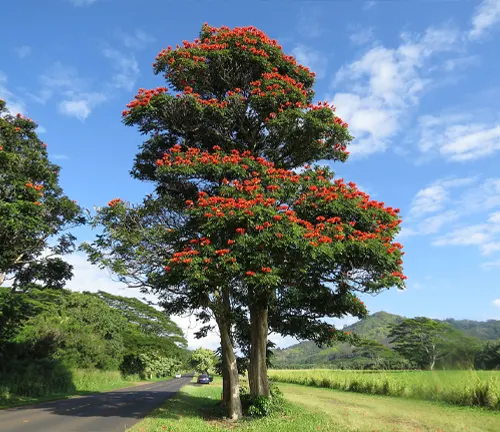
Benefits
In summary, the Tulip Tree is a botanical wonder that enriches our landscapes in multiple ways. Its botanical beauty, ecological importance, and multiple practical uses make it a species of great significance. By appreciating its natural splendor, supporting conservation efforts, and utilizing its timber wisely, we can ensure that the Tulip Tree remains an enduring symbol of beauty, functionality, and ecological vitality in the natural world.
Different Species
Liriodendron chinense
(Chinese Tulip Tree)
This species is native to China and is closely related to the North American Tulip Tree (Liriodendron tulipifera). It shares similar features, including tulip-shaped leaves and cup-shaped flowers. The Chinese Tulip Tree, like its American counterpart, is valued for its ornamental beauty.
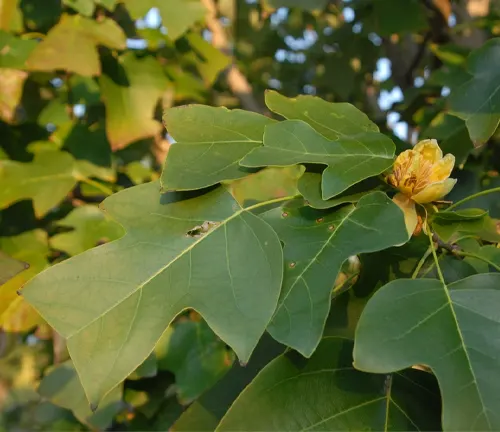
Liriodendron styracifluum
(American Sweetgum)
Although not typically referred to as a Tulip Tree, the American Sweetgum is sometimes called “Southern Tulip Tree” due to its star-shaped leaves that can resemble tulip leaves. It is native to the southeastern United States.
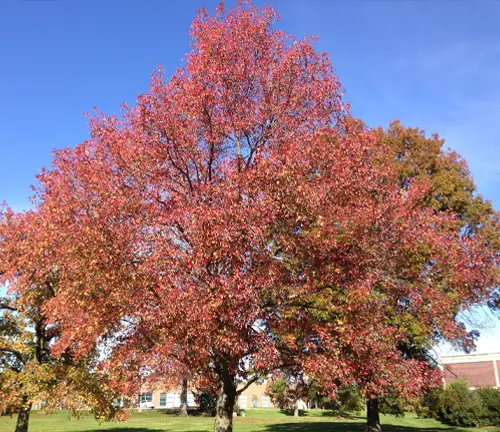
Liriodendron amapa
(Amapá Tulip Tree)
Found in parts of South America, this species is distinct from Liriodendron tulipifera and has its own unique characteristics. Its leaves and flowers may differ in shape and size.
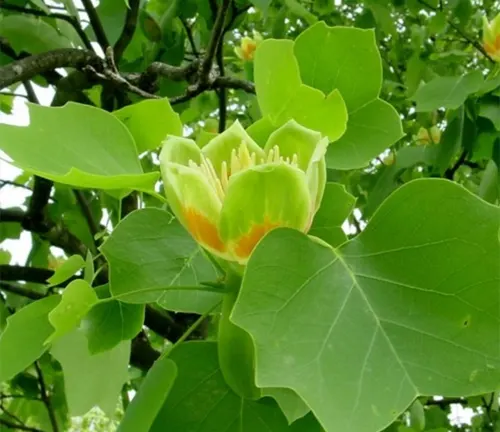
Liriodendron chinense var. sargentii
(Sargent’s Chinese Tulip Tree)
This is a variety of the Chinese Tulip Tree that can be found in specific regions of China. It may exhibit some variations in leaf and flower features compared to the standard Chinese Tulip Tree.

Frequently Asked Questions (FAQs)
- What is a Tulip Tree?
A Tulip Tree, scientifically known as Liriodendron tulipifera, is a large deciduous tree native to the eastern United States, known for its striking tulip-shaped leaves and greenish-yellow, tulip-like flowers. - How tall do Tulip Trees grow?
Tulip Trees can grow to impressive heights, typically reaching between 80 to 100 feet (24 to 30 meters) or even taller in ideal conditions. - What do Tulip Tree leaves look like?
Tulip Tree leaves are distinctive with a four-lobed, tulip-like shape. They are bright green in the summer and turn brilliant yellow in the fall. - When do Tulip Trees bloom?
Tulip Trees typically bloom in the spring, producing cup-shaped, greenish-yellow flowers with an orange band near the base. - What are the ecological benefits of Tulip Trees?
Tulip Trees support biodiversity by providing nectar for pollinators, habitat for birds and small mammals, and enriching forest floors with organic matter when their leaves and wood decompose. - How do I plant and care for a Tulip Tree in my garden?
Tulip Trees thrive in well-drained, loamy soil with full sun to partial shade. They require regular watering during their early years and benefit from mulch and occasional pruning. - What is the lifespan of a Tulip Tree?
Tulip Trees can live for several decades to over two centuries, with a typical lifespan ranging from 150 to 250 years when they are well-cared for. - What is the wood of Tulip Trees used for?
Tulip Tree wood is prized for its fine grain and durability. It is commonly used in furniture making, cabinetry, musical instruments, and construction, including framing and siding. - Are there other species of Tulip Trees?
While Liriodendron tulipifera is the most well-known species, there are other related species, such as the Chinese Tulip Tree (Liriodendron chinense) and the American Sweetgum (Liriodendron styracifluum). - Are Tulip Trees endangered or threatened?
Tulip Trees are not considered endangered or threatened as a species; however, they may face localized threats due to habitat loss and invasive pests in some regions. Conservation efforts are in place to protect them.





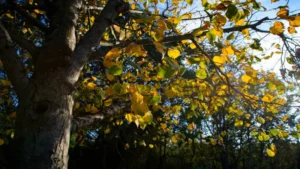


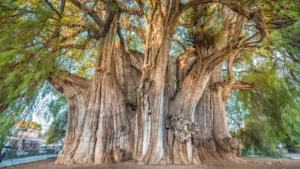

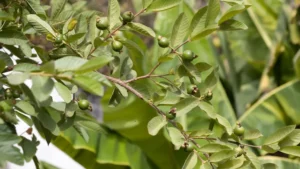

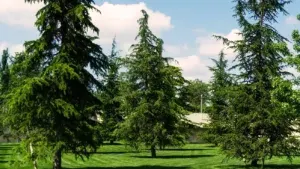
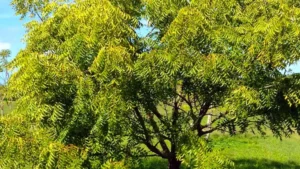
Leave your comment